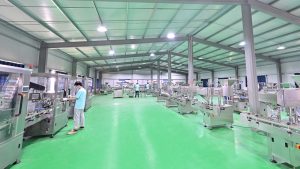Using a candy counting machine with sophisticated technology and precision engineering designs enable it to be adjustable for different sized candies. Different "counts" of candies can be done semi-automatically by modern machines with adjustable parameters (such as speed, length of time for each rotation...) or using candy-dependent variables when sensors are present. An optical sensor may detect candy size in just milliseconds and that has an accuracy of a lot more than 99.5%, as an example. This incredibly accurate level of accuracy ensures that there are no mistakes, as a result it helps in cutting down the cost and makes those machines very efficient
Its flexible channels and gates of the machine allow it to handle various shapes, sizes, in addition with different types or packaging. It is versatile for candies size from 1 mm to up to 30 mm thus a typically candy counting machine, standard in the market place. This enables easy change-overs from one production batch to the other in less than no time. A production throughput rate of 400 pieces per minute can be maintained yet it still allows for a quick and easy changeover from small candies like M&M's to larger gummy bears.
Using intelligent software systems also helps and increases the adaptability of the machine with entering data. Such systems use real-time data to tweak the parameters accordingly. Software now exists which can predict wear and tear on machine parts, increasing the life of them by up to 20% for companies such as Bosch Packaging#: price reductions So this predictive restorative maintenance is absolutely essential to retain high efficiencies and reduce downtime.
The design of these machines also must take into account cost considerations. High-end machines go for $20,000 to $50,000 on average. The investment is worthwhile when you consider how much money this can save from labor and the improvement in accuracy over manual counting. In the case of a candy counting machine an operator can control 10,000 pieces in one hour whereas same work manual takes few workers to do.

Advances in the technology that gives us accurate counts, such as transitioning from mechanical counters to electronic systems during the 1980s have come long way in improving both speed and accuracy of these machines. This advancement is seen in the intricate models of today, using laser scanning and X-ray imaging to cater for multiple candy sizes & shapes. As an example, X-ray imaging can identify and count candies inside non-transparent packaging to ensure no candy is left uncounted
A candy counting machine must meet industry insights when it comes to regulatory standards. The FDA guidelines for food safety were followed to assure that any materials used in making the device did not adulterate and impurities within the candy. The useful material of choice is stainless steel, which provides both longevity and hygiene-imperative for equipment used to process food.
Candy counting machines have a huge role to play in affecting the bottom line of this business, so you want to maximize its efficiency as much as possible. 1% improvement in counting accuracy can save large scale operations a lot of money. Image example: A company that makes 1 million candies daily could, for instance, save few thousand dollars per year by avoiding counting errors
As these companies lose customers, clever firms move up and redefine what a candy counting machine can really do. Most R&D departments improve machine learning algorithms on a continuous basis to achieve improved counting accuracy. In the future, these machines will likely be able to update themselves on candy size and shape externally using AI systems which can autonomously adapt real-time without human interference - definitely disrupting old industry standards of inefficiency.